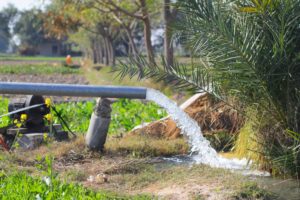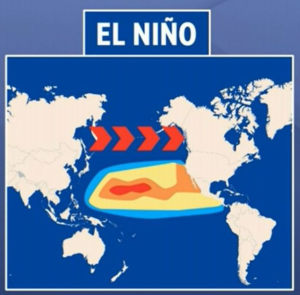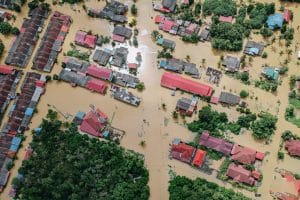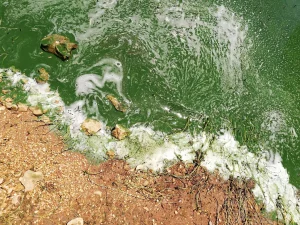Impacts of global changes in the water resources of the Philippines
Water scarcity is a growing problem in Southeast Asia, and the Philippines is one of the most vulnerable countries in the region. The country is already experiencing the effects of climate change, such as more frequent and intense droughts, which are making it more difficult to access safe and clean water.
A study by the Asian Development Bank (ADB) found that the Philippines could face a water deficit of up to 16 billion cubic meters by 2040. This deficit could have a devastating impact on the country’s economy and food security. The ADB study is not the only one to predict a water deficit in the Philippines. A study by the World Bank found that the Philippines could face a water deficit of up to 10 billion cubic meters by 2030. Another study by the United Nations Environment Programme found that the Philippines could face a water deficit of up to 12 billion cubic meters by 2050.
There are a number of factors that are contributing to water scarcity in the Philippines. These include:
- Climate change: As the climate changes, the Philippines is experiencing more frequent and intense droughts. This is reducing the amount of water available for agriculture, drinking, and other uses.
- Population growth: The Philippines is one of the fastest-growing countries in Southeast Asia. This is putting a strain on the country’s water resources.
- Pollution: Water pollution is also a major problem in the Philippines. This is making it difficult to access safe and clean water, inlcluding eutrophication of water bodies.
- Inefficient water use: The Philippines is also inefficient in its use of water. This means that more water is being used than is necessary.
- What is a water deficit?
A water deficit is the difference between the amount of water available and the amount of water needed. In the Philippines, the water deficit is expected to grow as the climate changes and the population grows.
For example, the Philippines’ annual water demand is estimated to be 160 billion cubic meters, while the country’s annual water supply is only 144 billion cubic meters. This means that the Philippines is already facing a water deficit of 16 billion cubic meters.
- How is climate change affecting the water crisis in the Philippines?
Climate change is causing the Philippines to experience more frequent and intense droughts. This is reducing the amount of water available for agriculture, drinking, and other uses.
For example, the drought in 2015-2016 caused water shortages in many parts of the country, including Metro Manila. The drought affected over 2.5 million people and caused an estimated $1 billion in damage.
These climatic effects can also be amplified by meteorological effects, such as El Nino.
- How is population growth affecting the water crisis in the Philippines?
The Philippines is one of the fastest-growing countries in Southeast Asia. This is putting a strain on the country’s water resources. The more people there are, the more water is needed for drinking, sanitation, and agriculture.
For example, the Philippines’ population is expected to reach 110 million by 2050. This means that the country’s water demand is also expected to increase by 50%.
- How is pollution affecting the water crisis in the Philippines?
Water pollution is also a major problem in the Philippines. This is making it difficult to access safe and clean water. Pollution can come from factories, farms, and sewage treatment plants.
For example, a study by the World Health Organization found that over 70% of the water in the Philippines is polluted. This pollution is a major health risk, as it can cause waterborne diseases such as cholera and typhoid.
- How is inefficient water use affecting the water crisis in the Philippines?
The Philippines is also inefficient in its use of water. This means that more water is being used than is necessary. For example, the Philippines loses about 30% of its water due to leaks in water pipes.
This inefficiency is also a major factor in the water crisis. If the Philippines could reduce its water losses, it would have more water available to meet the needs of its growing population.
- What are the consequences of the water crisis in the Philippines?
The water crisis in the Philippines is a major threat to the country’s economy and food security. Agriculture is a major economic driver in the Philippines, and it is heavily reliant on water. A water deficit could lead to crop failures, which would have a devastating impact on the country’s food supply.
For example, a study by the International Food Policy Research Institute found that a water deficit in the Philippines could lead to a loss of up to 10% of the country’s agricultural output.
The water crisis is also a major threat to public health. Water scarcity can lead to waterborne diseases, such as cholera and typhoid. It can also lead to conflicts over water resources.
- What can be done to address the water crisis in the Philippines?
The Philippines needs to take action now to address the water crisis. This includes investing in water infrastructure, improving water efficiency, and reducing water pollution. The country also needs to educate the public about the importance of water conservation.
For example, the Philippines government has invested in a number of water projects, such as dams and reservoirs. These projects are helping to store water during wet periods and release it during dry periods.
The government is also working to improve water efficiency. This includes promoting the use of drip irrigation in agriculture and fixing leaks in water pipes.
The government is also working to reduce water pollution. This includes enforcing regulations on factories and farms and investing in sewage treatment plants.
- What can you do to help address the water crisis in the Philippines?
There are a number of things that you can do to help address the water crisis in the Philippines. These include:
- Conserve water at home and at work. This can be done by taking shorter showers, fixing leaks in faucets, and watering your lawn less often.
- Fix leaks in water pipes. This can be done by calling a plumber or doing it yourself.
- Recycle and reuse water. This can be done by collecting rainwater or using graywater for watering plants.
- Support policies that promote water conservation and efficiency. This can be done by contacting your elected officials and letting them know that you support water conservation.
To go further :
- “Philippines Facing Water Crisis, Study Warns” by the World Bank. This article discusses the water crisis in the Philippines and the need for action to address it.
- “Water Crisis in the Philippines: Causes, Consequences, and Solutions” by the Asian Development Bank. This report provides an overview of the water crisis in the Philippines and the challenges that the country faces in addressing it.
- “Water Security in a Changing Climate: Southeast Asia” by the United Nations Environment Programme. This report discusses the water security challenges facing Southeast Asia, including the Philippines, and the region’s efforts to address these challenges.
- “Impacts of Climate Change on Water Resources in the Philippines” by the World Bank. This report discusses the impacts of climate change on water resources in the Philippines and the country’s vulnerability to water scarcity.
- “Water Pollution in the Philippines” by the World Health Organization. This report discusses the water pollution in the Philippines and the health risks associated with it.
- “Impacts of super typhoons and climate change” by PreventionWeb. This article states that “weather-related disasters increased by a factor of five in the last 50 years, driven by climate change.” The article also notes that “studies show that intense cyclones, storms, and typhoons are increasing due to the warming climate and will continue for the foreseeable future.” https://www.preventionweb.net/news/impacts-super-typhoons-and-climate-change
- “Response of damaging Philippines tropical cyclones to a warming climate using the pseudo global warming approach” by SpringerLink. This study found that the average intensity of typhoons in the western North Pacific (which includes the Philippines) has increased by about 10% since the 1970s. The study also found that this increase in intensity is projected to continue in the future. https://link.springer.com/article/10.1007/s00382-023-06742-6
- “For the Philippines, a warming world means stronger typhoons, fewer fish” by Mongabay. This article discusses the impacts of climate change on the Philippines, including the increasing intensity of typhoons. The article quotes a scientist from the Philippine Atmospheric, Geophysical and Astronomical Services Administration (PAGASA) who says that “the frequency of typhoons may not change, but the intensity will.” https://news.mongabay.com/2019/10/for-the-philippines-a-warming-world-means-stronger-typhoons-fewer-fish/: https://news.mongabay.com/2019/10/for-the-philippines-a-warming-world-means-stronger-typhoons-fewer-fish/
- “PHILIPPINES – Climate Change Knowledge Portal” by the World Bank. This report from the World Bank discusses the impacts of climate change on the Philippines, including the increasing intensity of typhoons. The report states that “the Philippines is especially exposed to tropical cyclones, flooding, and landslides.” https://climateknowledgeportal.worldbank.org/sites/default/files/2021-08/15852-WB_Philippines%20Country%20Profile-WEB.pdf







